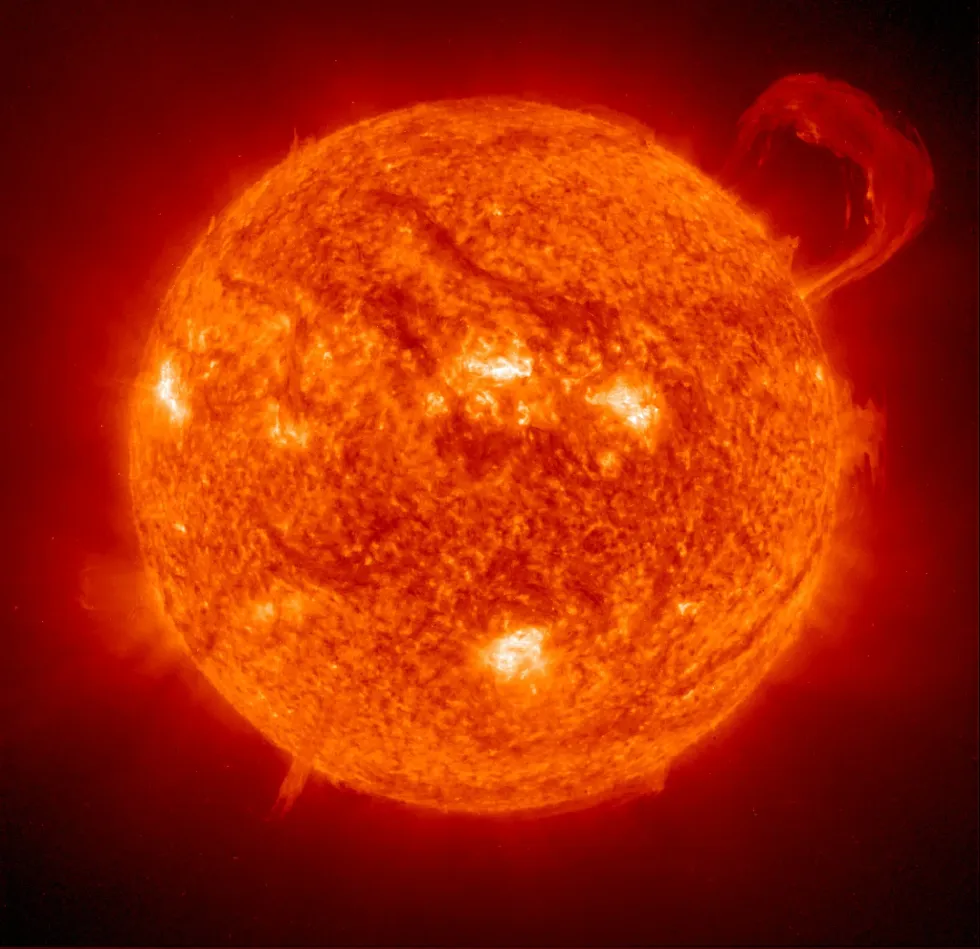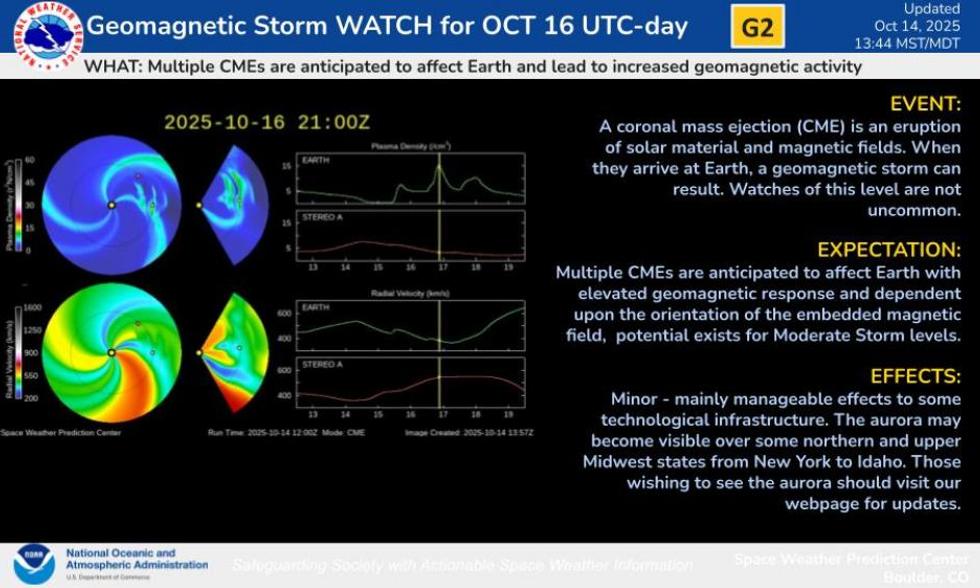‘Four-way’ solar storm hurtling towards Earth - set to strike in just HOURS

It has raised alarms of potential technological disruptions
Don't Miss
Most Read
Four powerful bursts of solar energy is making its way toward Earth, raising alarms of technological disruptions.
The US National Oceanic and Atmospheric Administration has declared a moderate geomagnetic storm alert for today, cautioning that electrical networks, wireless communications and satellite navigation could experience interference.
These solar eruptions, technically called coronal mass ejections, consist of electrically charged particles expelled from the Sun.
When these particles strike Earth's magnetic shield, they cause distortions and fluctuations in the planet's protective field.
The quartet of energy bursts originated from solar eruptions that occurred from October 11 to 13, now making their journey across the 150-million-kilometre void between the Sun and Earth.
Space weather expert Tamitha Skov has provided crucial timing details for the incoming disturbances.
"Storms 2 to 4 arrive starting midday on October 15," she stated, indicating the main impacts have already started reaching Earth.
The scientist warned that consequences could persist "until early October 17, assuming the sun doesn't send any more Earth-directed storms".

The coronal mass ejections were launched between October 11 and 13 from the sun
| NASAWhilst the initial coronal mass ejection may cause only a "mild disturbance," Ms Skov cautioned that the subsequent three are "pancaked together," which could intensify their combined impact as they strike in rapid sequence.
She noted on Wednesday that the planet had already experienced a "warm-up pitch" before the primary event, with three further disturbances and a rapid stream of solar particles still approaching.
The extraordinary solar activity originates from a vast, complex formation of dark patches on the Sun's surface designated Region AR4246.
This sunspot cluster features highly active and contorted magnetic fields that trigger explosive energy releases called solar flares.
Throughout this week, the region has generated multiple M-class flares-moderate-strength eruptions capable of interfering with radio communications and producing vivid auroral displays on Earth.
A particularly notable eruption occurred on October 13 when an M2.7 flare discharged from this active zone.
This explosion propelled one of the coronal mass ejections currently travelling towards Earth, contributing to the quartet of charged particle clouds threatening technological systems.
The atmospheric light display known as the aurora borealis could become visible across extensive areas of the northern United States.
Observers from New York to Idaho may witness the phenomenon, with potential sightings in Maine, Michigan, Wisconsin, Minnesota, North Dakota and Montana.

Geomagnetic storm watch for October 16
|NOAA
Electrical infrastructure impacts should remain minimal, primarily affecting high-latitude areas including Alaska and northern territories adjacent to Canada.
Rather than major blackouts, these regions might experience slight voltage variations.
Navigation and communication systems face potential short-term disruptions, particularly in northern latitudes and along polar aviation corridors.
The interference should prove less significant in southern regions, though aircraft and shipping operations may notice brief signal degradation during peak storm activity.











